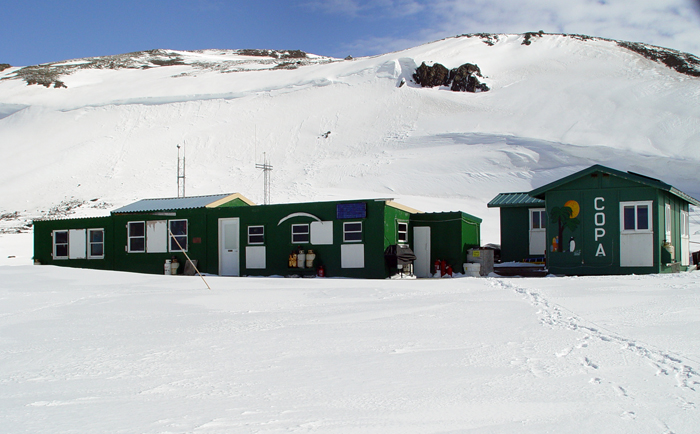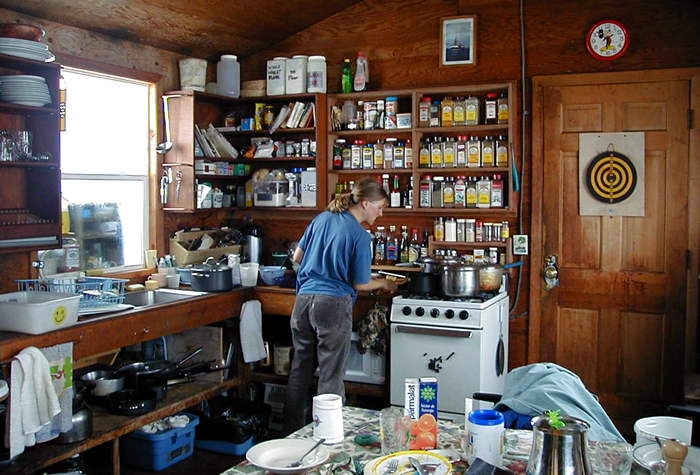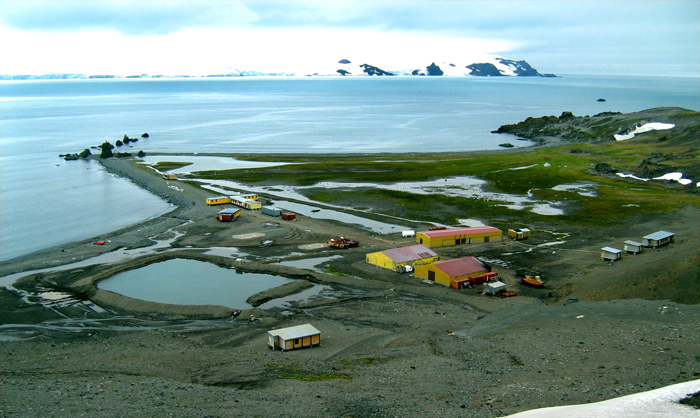|
Away from the labResearch on Antarctic Peninsula islands requires scientists to spend weeks at isolated outpostsPosted November 26, 2008
Science doesn’t just happen in sterile labs. Researchers interested in studying one of the world’s fastest-changing ecosystems spend months at a time living out of a handful of wooden buildings on the South Shetland Islands just off the northern tip of the Antarctic Peninsula. The camps at Cape Shirreff on Livingston Island and Copacabana on King George Island offer a few conveniences in these relatively isolated outposts — in recent years, even e-mail — but the scientists who abandon their homes each austral summer aren’t staying in all-inclusive resorts. They must cook and clean for themselves, hike innumerable kilometers over ice-covered terrain, and endure unpredictable storms. All while conducting research on these inhospitable islands. On the Peninsula
“When I get there in October, we’re out there all day long setting up the study,” says Susan Trivelpiece The National Science Foundation (NSF) The NSF established Copa in 1985 when it funded the work by Wayne and Susan Trivelpiece, and helped build a similar camp for NOAA at Cape Shirreff on Livingston about 10 years later. At Cape Shirreff, where NOAA biologist Mike Goebel Everyone reconvenes for dinner, with cooking and cleaning duties rotating among each person every night. “That is the social time of the day,” Goebel says. That’s usually when the scientists take time to send and reply to e-mails, available thanks to an Iridium satellite connection. “That’s also a highlight of everyone’s day,” Goebel says. “E-mail is an important part of life at Cape Shirreff and at Copa.” The Cape Shirreff camp consists of several buildings. One houses a generator area, tool shop and hazardous materials. It is separated from the main dining and socializing hut, which sleeps four people. A third building stores food and medical supplies with bunks for two more people. “Our camp is really designed for safety,” Goebel explains. The Copa camp has similar facilities, including a wet lab where the seabird biologists do their diet sampling work. The generator at the camp is quiet most of the season thanks to an emphasis on alternative energy. “Most of our power through most of the season is solar and wind generated,” Trivelpiece says. Wayne Trivelpiece “It’s been amazing how wonderful, and especially quiet, the use of solar and wind power had made the camp, and how efficient,” he says. The Copa camp also happens to be located in a good neighborhood. Only a few kilometers away is the Polish Henryk Arctowski Research Station. The Polish station provides additional support to the U.S. Antarctic Program (USAP) “The reason that we can do Copa without on-site USAP personnel is that … [the] Polish base has a lot of stuff that Copa doesn’t have, like a doctor and a clinic and laundry, showers, and so forth.” Each Saturday the Copa camp team hikes across a glacier to Arctowski, where they socialize, bring laundry like a college student home for the weekend, and enjoy a hot shower. “We rely on them for many things,” Wayne Trivelpiece says. “The Polish station and the good relations we’ve had with them for many years has been a real key to making our camp such a great place to live and work. Having a good hot shower once a week is a godsend in a place like that.” Adds Evans, “It’s in the best spirit of Antarctic cooperation.” The Cape Shirreff team, on the other hand, has to rough it a bit more than their colleagues at Copa. They do laundry by hand and heat water on a stove in a big pot for a weekly shower. Goebel says the toughest part of the months-long expedition is going without proper laundry, as the propane heaters provide a damp heat. “It’s hard to get things to dry out,” he says. “You have to like camping.” |



For USAP Participants |
For The Public |
For Researchers and EducatorsContact UsU.S. National Science FoundationOffice of Polar Programs Geosciences Directorate 2415 Eisenhower Avenue, Suite W7100 Alexandria, VA 22314 Sign up for the NSF Office of Polar Programs newsletter and events. Feedback Form |




